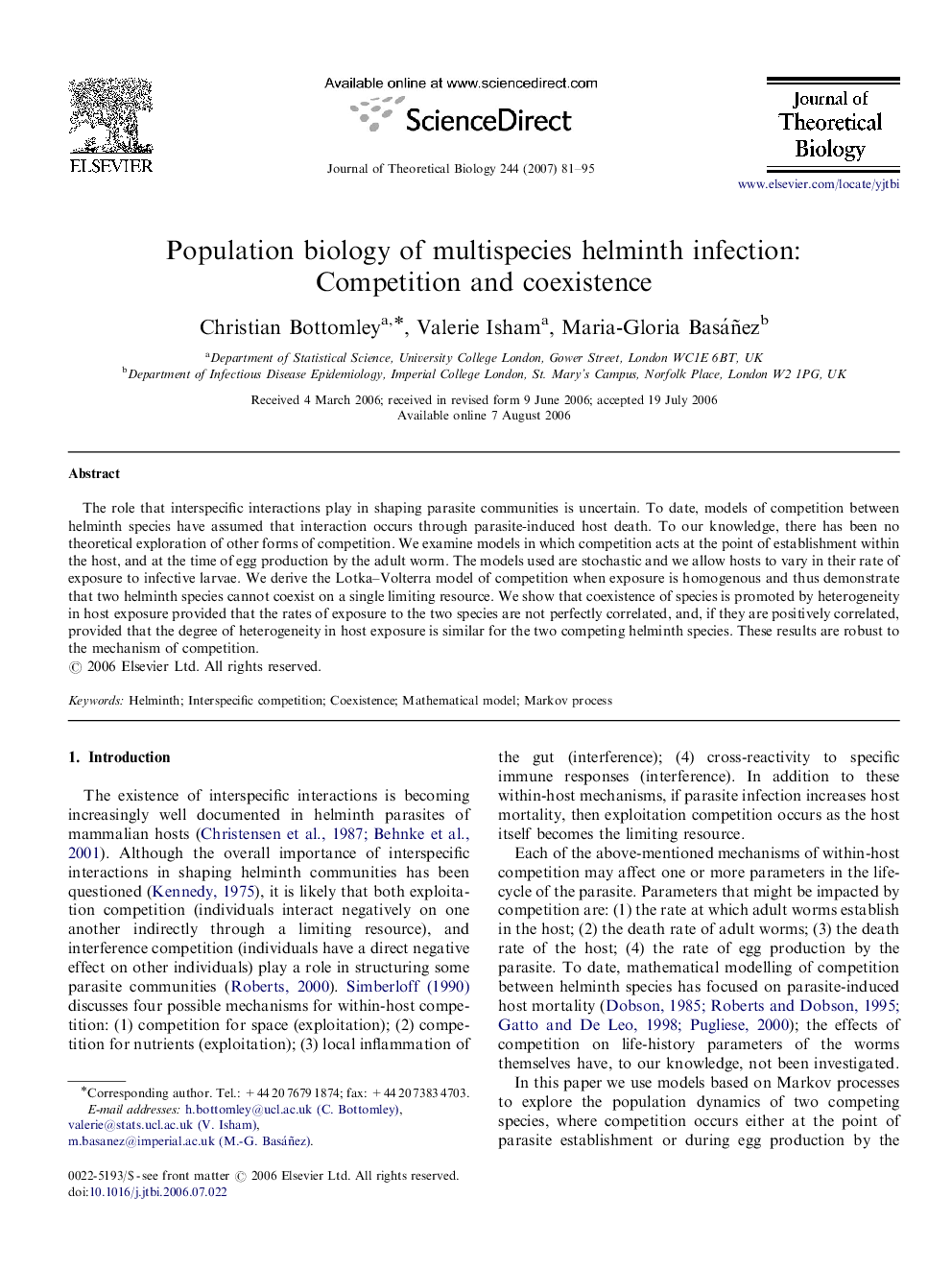| Article ID | Journal | Published Year | Pages | File Type |
|---|---|---|---|---|
| 4499081 | Journal of Theoretical Biology | 2007 | 15 Pages |
The role that interspecific interactions play in shaping parasite communities is uncertain. To date, models of competition between helminth species have assumed that interaction occurs through parasite-induced host death. To our knowledge, there has been no theoretical exploration of other forms of competition. We examine models in which competition acts at the point of establishment within the host, and at the time of egg production by the adult worm. The models used are stochastic and we allow hosts to vary in their rate of exposure to infective larvae. We derive the Lotka–Volterra model of competition when exposure is homogenous and thus demonstrate that two helminth species cannot coexist on a single limiting resource. We show that coexistence of species is promoted by heterogeneity in host exposure provided that the rates of exposure to the two species are not perfectly correlated, and, if they are positively correlated, provided that the degree of heterogeneity in host exposure is similar for the two competing helminth species. These results are robust to the mechanism of competition.
